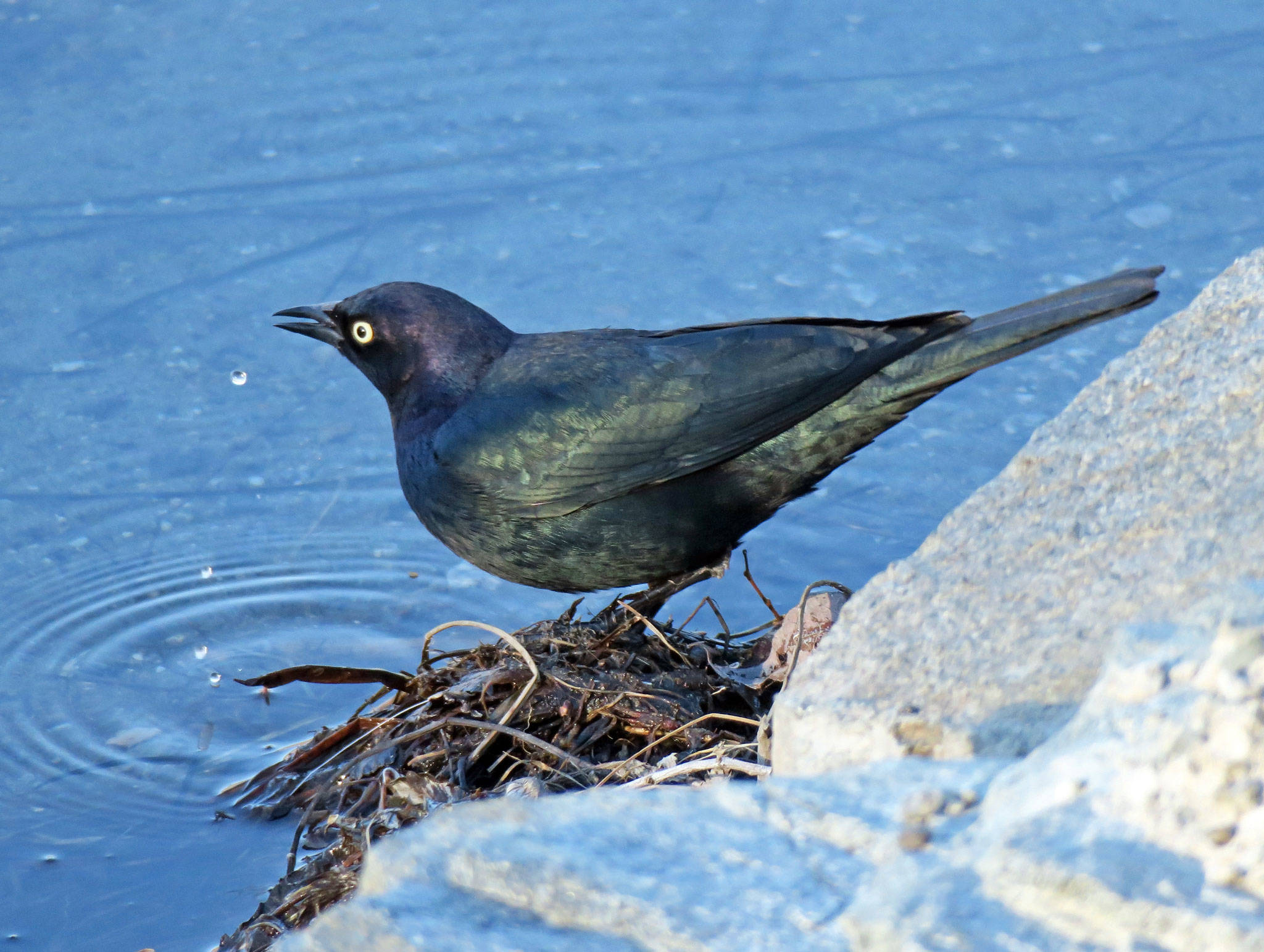The Cornell Lab of Ornithology says this bird is best viewed in full sun to get an appreciation of its varied colors…at least with the adult male. At first glance, most assume the large numbers of birds perching on power or cable lines overhead are starlings, but often they are Brewer’s Blackbirds. Enjoy this photo by Mike Hamilton of an adult male, of course.
General Description: The male Brewer’s Blackbird is a medium-sized bird with glossy black, metallic green, and midnight blue iridescent colors when seen in full sun. His yellow eyes are the only lighter color, while his bill and legs are also black. The female is a duller brownish-gray with brown eyes. She is slightly smaller in mass. The male is 8.3 to 9.8 inches in length and weighs about 3 ounces, while the female is 7.9 to 8.7 inches and weighs 1.8 to 2.4 ounces. Both have a wingspan of 4.6 inches.
Habitat: Brewer’s Blackbirds are usually associated with agricultural fields with brushy edges, but they have formed a relationship with humans that has allowed them to expand into yards, city parks, golf courses, and anywhere else humans have cleared open spaces. They can be found on utility wires overhead, and feeding on the ground in almost any cleared space.
Behavior: This bird can be found in large numbers during non-breeding season, either perched overhead or foraging on the ground. They can also be found following farm equipment, taking advantage of the food turned up by the plows. There is a constant calling that is entirely different than the Starling, another way to tell them apart.
Diet: One of their favorite foods is waste grains at feedlots, but the Brewer’s Blackbird will also eat seeds of the ground under feeders, insects, and berries.
Nesting: Brewer’s Blackbirds are monogamous and sometimes nest in small, loose colonies. They usually nest in trees, but may nest on the ground, in shrubs, or in tall grass. The female builds a bulky, open cup nest of twigs, grass, weeds, and needles, lined with grass, rootlets, and hair. Mud or manure often holds the base together. The female incubates 4 to 6 eggs for 12 to 14 days, and both male and female feed the young. The young leave the nest 13 to 14 days after hatching. Each pair raises one or two broods a year.
Migration: Brewer’s Blackbird are permanent residents of Washington state, but some migrate in altitude, spending the breeding season in higher altitudes then moving into the lowlands for the winter. Feed lots are a favorite place to go in the fall into winter.
Conservation Status: The Brewer’s Blackbird does well in human-altered habitat, so the conversion of shrub-steppe into farmland has been of great benefit to this bird. Likewise, the conversion of riparian areas of brush, bushes and trees into lawns and parks has also benefitted. They are increasing in small but significant numbers.
When and Where to Find in Grays Harbor: Look for large flocks on utility lines, under those same lines, on grassy medians, in parks and golf courses, and in the agricultural fields and feed lots of the east county.


